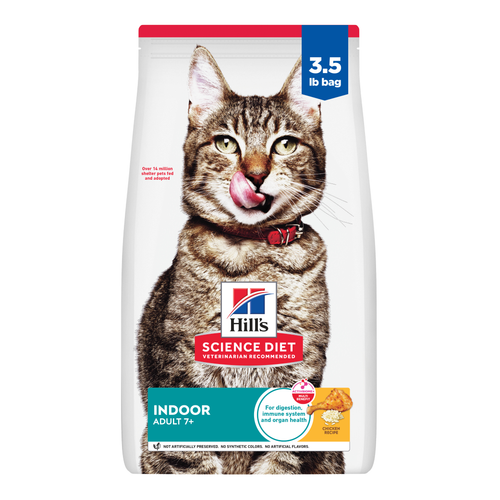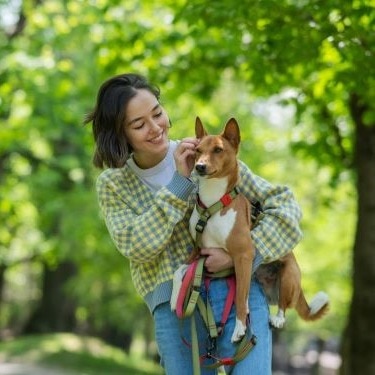
-
Find the right food for your petTake this quiz to see which food may be the best for your furry friend.Find the right food for your petTake this quiz to see which food may be the best for your furry friend.Featured products
 Adult Large Breed Chicken & Barley Recipe Dog Food
Adult Large Breed Chicken & Barley Recipe Dog FoodSupports healthy joints, lean muscle, and beautiful coat for large breed dogs
Shop Now Hill's Science Diet Adult Chicken & Beef Entrée Dog Food
Hill's Science Diet Adult Chicken & Beef Entrée Dog FoodChicken & Beef Entrée in a delicious loaf with complete & balanced nutrition to help keep adult dogs active and healthy
Shop Now Adult Chicken & Barley Recipe Dog Food
Adult Chicken & Barley Recipe Dog FoodSupports lean muscle and beautiful coat for adult dogs
Shop NowFeatured products Adult Turkey & Liver Entrée Cat Food
Adult Turkey & Liver Entrée Cat FoodPrecisely balanced nutrition with the delicious taste of minced turkey & liver to help fuel the energy needs of cats during the prime of their life
Shop Now Adult 7+ Indoor Chicken Recipe Cat Food
Adult 7+ Indoor Chicken Recipe Cat FoodSupports energy level and beautiful fur in mature indoor cats
Shop Now Senior Vitality Adult 7+ Tuna & Vegetables Stew
Senior Vitality Adult 7+ Tuna & Vegetables StewImproves Everyday Ability to Get Up & Go
Shop Now -
Dog
- Dog Tips & Articles
-
Health Category
- Weight
- Food & Environmental Sensitivities
- Urinary
- Digestive
- Joint
- Kidney
-
Life Stage
- Puppy Nutrition
- Adult Nutrition
- Senior Nutrition
Cat- Cat Tips & Articles
-
Health Category
- Weight
- Skin & Food Sensitivities
- Urinary
- Digestive
- Kidney
-
Life Stage
- Kitten Nutrition
- Adult Nutrition
Featured articles The Science Behind Our Love for Pets
The Science Behind Our Love for PetsLearn the scientific reasons why we have such strong connections with our pets, and what science says about the love between humans and our furry friends.
Read More How to Properly Mix Wet & Dry Pet Foods
How to Properly Mix Wet & Dry Pet FoodsAn Orange cat eating from a bowl filled with mixed food
Read More What Is Littermate Syndrome? Pet Adoption Guide
What Is Littermate Syndrome? Pet Adoption GuideLearn more about littermate syndrome in dogs and cats and how to successfully navigate adoption and early socialization processes.
Read More -


Have you ever wondered if leaving a dog outside for an extended period of time is okay? While your pet may love being outdoors and is well-trained, it doesn't mean he will be safe. There are many dangers that your dog will experience when he's left alone outside, such as weather conditions, poisonous plants or chemicals, or attack by other animals. Your dog may also become lonely or bored being left outside.
Weather Conditions and an Outdoor Dog
It's important to protect your dog from the elements, such as wind, rain, snow, and even sunshine. Different types of weather bring different considerations on how to keep your dog safe. The length of time you can leave your dog outside greatly relies on the weather. In extreme cold or hot conditions, your dog should be able to seek refuge in your home to balance out the outside temperature. There is nothing wrong with letting an active dog play in the snow for a while if he is able to come in and warm up. Similarly, a dog who enjoys sunbathing should have plenty of access to shade and cold water. Without access to your home, dogs can overheat or even freeze to death.
If your dog must be kept outside for a long period of time, invest in a kennel to give him shelter from weather conditions. Opt for one that is insulated, waterproof, and can be covered to block the sun's rays. The kennel doesn't need to be too large, just big enough for your dog to move around comfortably. Keep it stocked with warm blankets in the winter and cool towels in the summer.
Never leave your dog unattended for long periods of time, this includes overnight. If something happens to your dog such as heatstroke or hypothermia, the longer it goes unattended the worse it will be for him. Always check on him to make sure he has enough water and is not exhibiting any signs of health issues.


Tasty Tips
Safety Tips for Keeping Your Dog Outdoors
Heat
- Your dog must always have access to water. Lightweight water bowls that can easily be knocked over or bumped into should be left in the house. Instead, dig a shallow hole into the ground for a bucket. Then, fill it with water and ice cubes. The ground will keep the water cool.
- Provide shade for your dog. The rays of the sun can overwhelm your dog. If he can't escape from the warmth, he may overheat and will not be able to regulate his body temperature. And despite misconceptions, dogs can get sunburned, primarily on their nose and ears. A place out of the sun will help prevent sunburn.
- Remember that pavement and sand are extremely hot. If your dog isn't wearing shoes like you, move him to an area with cooler flooring, such as the grass.
Cold
- Your dog needs an escape from the cold and/or winter winds. An insulated dog house provides protection from the elements. Warming lamps can also be a great investment. Similar to an incubator for baby chicks, these warming lamps can help keep your dog's outdoor kennel warm, just make sure it doesn't get too hot for him.
- Short-haired dogs need an extra layer of protection. Invest in a sweater or jacket for your pet to wear outdoors.
- Keep your dog away from any de-icer or rock salt in the winter months. These can be very irritating to your dog's paws and mucous membranes. Most concerning is that they are poisonous; your dog could die if it is ingested.
- If snow accumulates high enough that it is too hard for him to walk around, make sure to shovel a walk way for him to go potty and play. Never leave him alone if the snow is high enough to reach his neck because he could get lost in the snow and you could struggle to find him in unfavorable conditions.
Access
- If your dog will be spending long periods outside, invest in a fence that will keep him safely confined and unable to escape. Fences also help protect your dog from wild animals. Fences or other barriers can also be beneficial to keep your dog out of places like your gardens or backyard ponds.
- Make sure your dog doesn't have access to areas in your garage where there may be toxic chemicals for your car, antifreeze, gasoline, or sharp tools that could seriously injure or kill your dog.
- Your dog needs full access to food and water and a place to relieve himself at all times.
- Doggie doors can be useful if your dog is trained to go outside to do his business and come back in immediately. Do not be reliant on him to decide how long he stays outside, and make sure to close off the doggie door at night.
Warning Signs
- Heatstroke: Some signs of heatstroke include vomiting, diarrhea, blue or bright red gums or tongue, drooling, and a rapid heart rate. Also, if your dog is slow and isn't listening to your commands, get him in the shade and cool him down ASAP.
- Hypothermia: The Animal Humane Society says to watch for a "weak pulse, dilated pupils, decreased heart rate, extreme shivering, pale or blue mucous membranes, body temperature below 95 degrees, stupor and unconsciousness. Consequences of extreme hypothermia may include neurological problems including coma, heart problems and kidney failure."
Consider your dog's emotions before leaving him outside for an extended period. Dogs are pack animals, and your human family is their new pack. They want to be close to you, and you enjoy their company as well. Allow your dog to explore the outdoors, but always keep your door open for him to return inside.


Erin Ollila believes in the power of words and how a message can inform—and even transform—its intended audience. Her writing can be found all over the internet and in print, and includes interviews, ghostwriting, blog posts, and creative nonfiction. Erin is a geek for SEO and all things social media. She graduated from Fairfield University with an M.F.A. in Creative Writing. Reach out to her on Twitter @ReinventingErin or learn more about her at http://erinollila.com.
Related products

Chicken & Beef Entrée in a delicious loaf with complete & balanced nutrition to help keep adult dogs active and healthy

Chicken & Barley Entrée in a delicious loaf with great taste and precisely balanced nutrition to support 5 essential building blocks for lifelong health

Supports healthy joints, lean muscle, and beautiful coat for large breed dogs

Supports lean muscle and beautiful coat for adult dogs
Related articles

Wondering where can I buy a dog? Consider adoption and explore the pros and cons of adopting a dog from a breeder versus an animal shelter.

Your dog's coat and skin are a big part of your dog's overall health. Ensure you keep your dog's coat healthy, by following these simple tips.

Learn how to help keep your dog's immune system in tip-top shape, including nutritional immune system support for dogs and other strategies.

Discover how the field of dog science is giving us more and more insights into the inner workings of our furry best friends.

Put your dog on a diet without them knowing
Our low calorie formula helps you control your dog's weight. It's packed with high-quality protein for building lean muscles, and made with purposeful ingredients for a flavorful, nutritious meal. Clinically proven antioxidants, Vitamin C+E, help promote a healthy immune system.
Put your dog on a diet without them knowing
Our low calorie formula helps you control your dog's weight. It's packed with high-quality protein for building lean muscles, and made with purposeful ingredients for a flavorful, nutritious meal. Clinically proven antioxidants, Vitamin C+E, help promote a healthy immune system.

